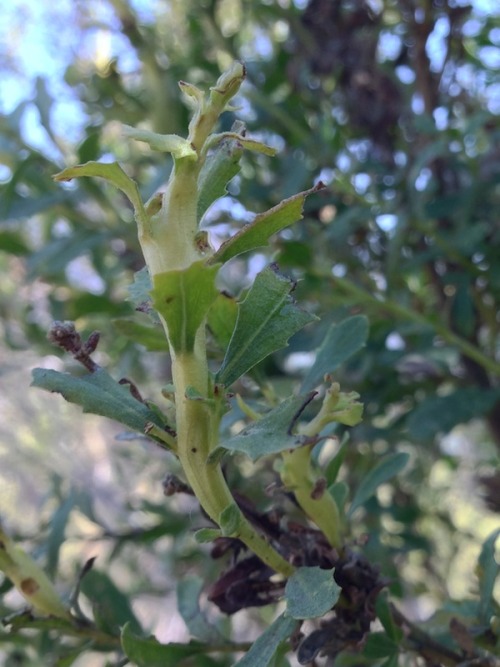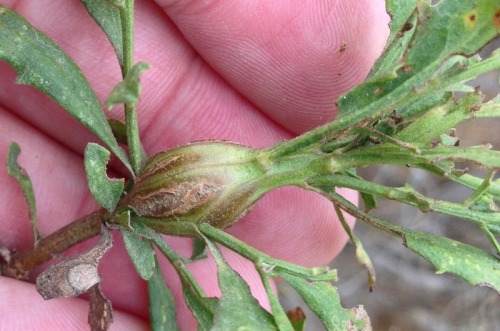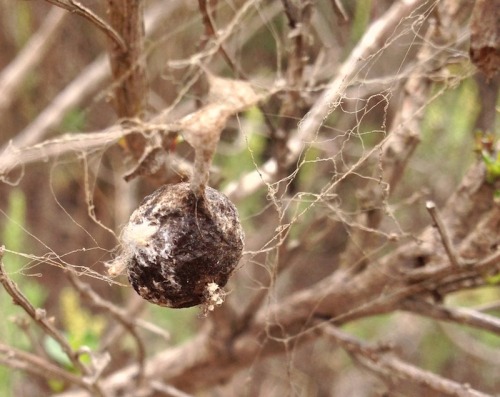Bugs at the marsh Here are more photos I’ve taken recently…
Friday, August 9th, 2013





Bugs at the marsh
Here are more photos I’ve taken recently at the Carpinteria salt marsh. These all relate to arthropods (to insects, mostly, plus one spider), so I’ve put them in a separate post to help anonsally avoid them with Tumblr Savior.
The outbreak of green leaf beetles (Trirhabda flavolimbata) that defoliated much of the marsh’s coyote brush (Baccharis pilularis) has now ended. There are only a few adult beetles left, and the coyote brush has started putting out new leaves. I took the photo above on July 14, when the beetles were still fairly easy to find.
The next image is of a syrphid fly in the genus Allograpta; probably A. obliqua or A. exotica. I took this photo the same day as the beetle photo and just a few feet away; both insects were sitting motionless at the tips of their respective stems, giving me time to take lots of shots until I got the focus right. Syrphids (also called hover flies or flower flies) act like bees, hovering to drink nectar from flowers and serving as important pollinators. They don’t have stingers, but have evolved warning colors like bees and wasps to confuse predators into leaving them alone. This is “Batesian mimicry,” named after 19th-century British naturalist Henry Walter Bates, who first observed it in South American butterflies. Whenever I hear the term, though, I think of Mrs. and Miss Bates from Emma.
Next are a couple of photos of super-cool twisted stem galls in coyote brush. The galls are the work of Rhopalomyia baccharis, a tiny midge. The adult midges look identical to their close relatives, Rhopalomyia californica, which I’ve blogged about before, but the galls are completely different. R. californica galls are the size and shape of a marble, and are found at the end of coyote brush stems. R. baccharis galls take the form of these thickened S-curves in the stem itself. A single larva lives in a chamber below each of the gall’s curves. Unlike R. californica larvae, which chew their way to the gall’s surface before they pupate, R. baccharis larvae pupate deep within the gall. Then, somehow, they trigger the host plant to create a tunnel leading to an elliptical exit hole just in time for the adult midge to emerge. The lefthand image above shows me holding a gall to give a sense of scale, while the righthand image shows a different gall with one of those elliptical exit holes.
There is a patch of coyote brush near the marsh amphitheater that has a bunch of these galls right now, and I’m really excited about it, because although I’ve looked for them for years I’ve previously only found a few of them. Hopefully the city Parks and Rec. Department gardeners won’t prune these, as they previously did for another batch of twisted stem galls I found at the marsh.
The next image shows me holding another kind of coyote brush gall. This is the work of a moth called Gnorimoschema baccharisella. A single caterpillar lives inside the gall. When it’s ready to pupate the caterpillar chews its way out and burrows into the ground. But that’s not the end for the gall. Now that it has that convenient hole, a bunch of other species invade it. Fungus grows on the departed caterpillar’s frass (droppings) inside the gall, fungus mites arrive to feed on the fungus, and probably lots of other things happen that I haven’t learned about yet. You can read more about G. baccharisella and see some video I took of a fungus mite running around inside an old gall at my Carp Without Cars blog.
The last image above is not of a gall, but of the kind of thing many observers mistakenly think galls are: an egg case. Specifically, an egg case of the bolas spider (Mastophora cornigera). Bolas spiders have an amazing hunting behavior: They catch their prey not by weaving a web, but by letting out a silken thread with a sticky blob on the end, then waving it around to lasso passing moths. To help improve their chances, the blob gives off a chemical scent that closely imitates the pheromones of the target moth species. Researchers have found that the bolas spider varies the chemical signature of the scent lure over the course of the night, to better match the pheromones of different moths species that tend to be active at different times.
I wrote more about the bolas spider in another post at Carp Without Cars, so check that out if you want. You can also watch a really cool video from David Attenborough’s Life in the Undergrowth series, showing a bolas spider capturing its prey. It’s kind of creepy to watch, even for someone like me who has worked for decades to overcome his arachnophobia, but I think it’s worth it.
Reposted from http://lies.tumblr.com/post/57850503745.
